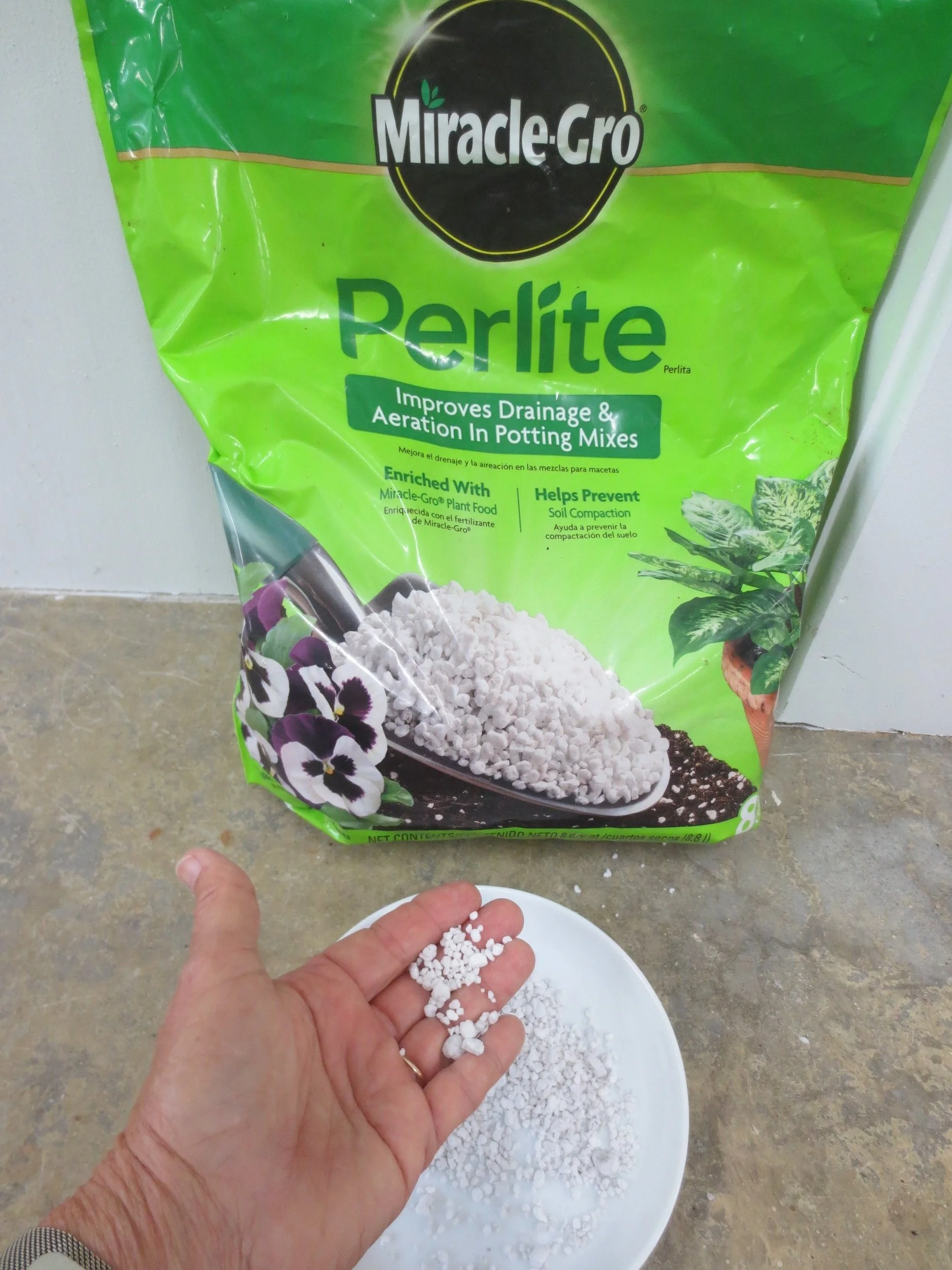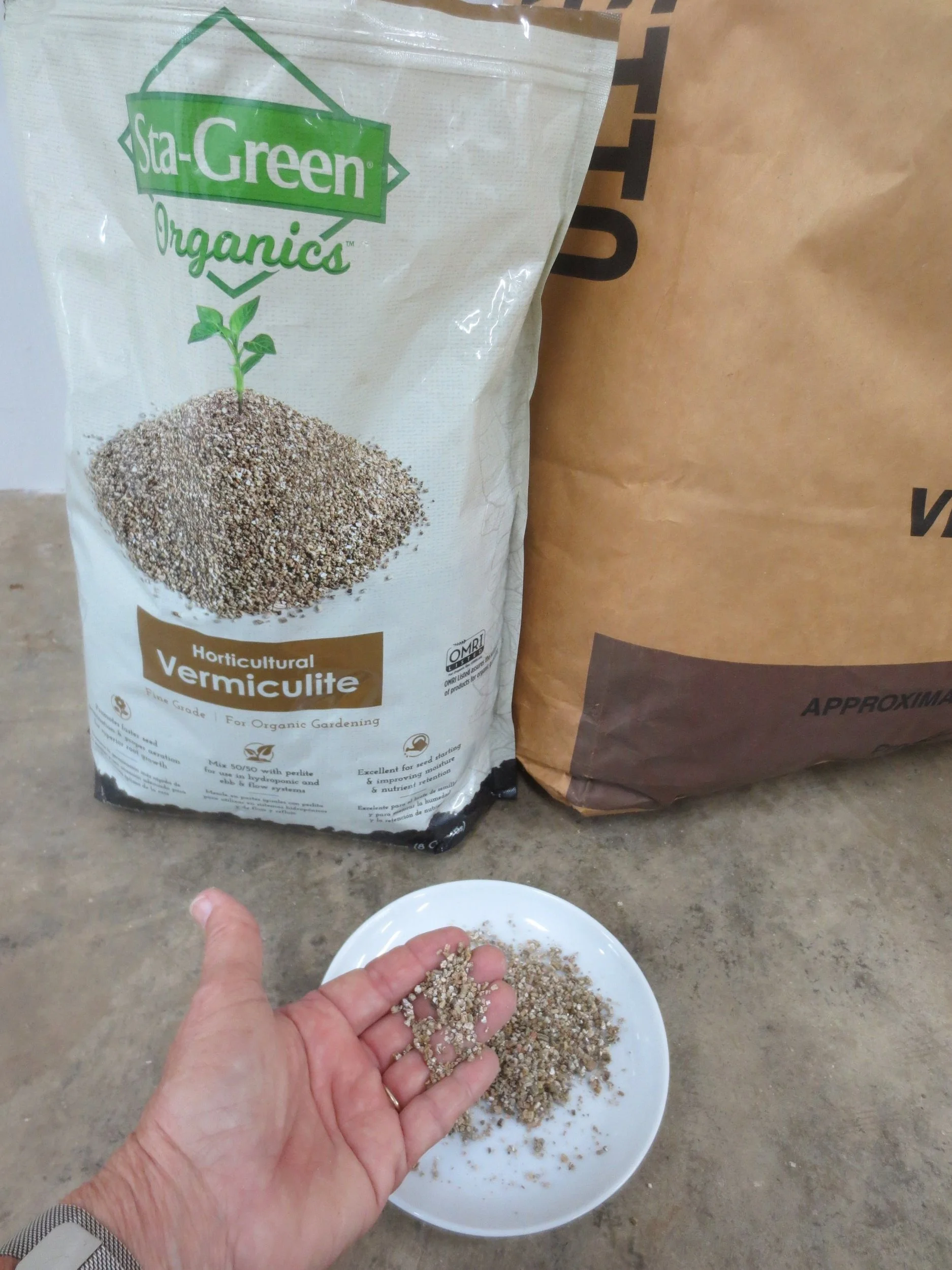The large bag should last a long time.
I finally broke down and bought the mother of all bags of horticultural vermiculite. A whopping four cubic feet, it filled the entire back seat of my small car. In past years, I have purchased standard-sized bags found in home improvement garden centers or big box stores. During the coronavirus pandemic, the product was scarce. I had to make do by recycling media that had already been used for rooting or using smaller containers.
I do a lot of home propagation because I’m too cheap to buy full-size plants at the nursery. Vermiculite is my product of choice when it comes to propagation from cuttings. (If you want the complete details, please see my YouTube channel on small-scale home propagation using a Forsyth pot: https://www.youtube.com/watch?v=KsBv12O17MY ). The supersize bag should last a couple of years. Why don’t I use perlite instead, which is available at most garden centers? Are perlite and vermiculite interchangeable? Well, yes and no. Let’s compare these two products.
Perlite is volcanic rock which has been crushed and then heated until it explodes like popcorn. The small, rounded particles look like particles of Styrofoam, but it is unrelated. Styrofoam is manufactured from a petroleum-based product, styrene. Perlite is a renewable resource, assuming that earth’s volcanoes will continue to erupt. It is added to potting soils to make them more porous and can be mixed into heavy soils to reduce compaction. It is neutral to slightly alkaline in pH, odorless, non-toxic, won’t mold, and is easy to handle. It will retain approximately three times its weight in water. While it contains no fertility in its original state, I have noticed several bags that indicate a fertilizer has been added. Perlite is an ideal product for cactus or succulents, usually mixed with some form of potting soil or coir, a replacement for peat moss.
Perlite particles are evident in potting soil.
The downside of perlite, and the reason I avoid it, it that it is so light that it floats. If you have purchased six-packs of annuals grown in a soil mix that contains perlite, I’m sure you have seen what happens when those little plants are installed in flower beds or containers. After rain or irrigation, the white particles float to the top. I find those ghost-white balls unsightly and unnatural looking. That is a personal opinion, so feel free to differ.
Vermiculite is (get ready for a mouthful) magnesium aluminum iron silicate. It is 100% natural, and looks like someone threw a handful of mica into a blender. The product comes in fine, medium, or coarse textures. I prefer the fine-to-medium size, but again, that is personal preference. Vermiculite has a neutral pH. It retains both water and fertility. Mixed into heavy clay soil, it will make the soil more porous and less prone to compaction. I start each new growing season by dumping my propagation pots into my garden beds and mixing it in with the soil. If you plan to use it to lighten clay soil, the coarse grade works best.
Vermiculite retains more water than perlite, so it is preferred when the cuttings or potted plants need a bit more moisture. Perlite drains so quickly that it is not ideal for plants with high water demands.
When I asked a professional propagator his preference, he said that he uses a perlite/peat mix for cutting propagation and vermiculite for seed starting. I’m transitioning away from peat moss use, but a perlite/coir combination should work well. At seed-starting time, especially when starting tiny seeds like begonia, petunia or the like, I place the seeds on top of sopping wet vermiculite, then sprinkle with the very lightest application of dry vermiculite. I only bottom-water, to avoid displacing the seeds. Emerging seedlings have little problem in pushing their way through to sunlight.



